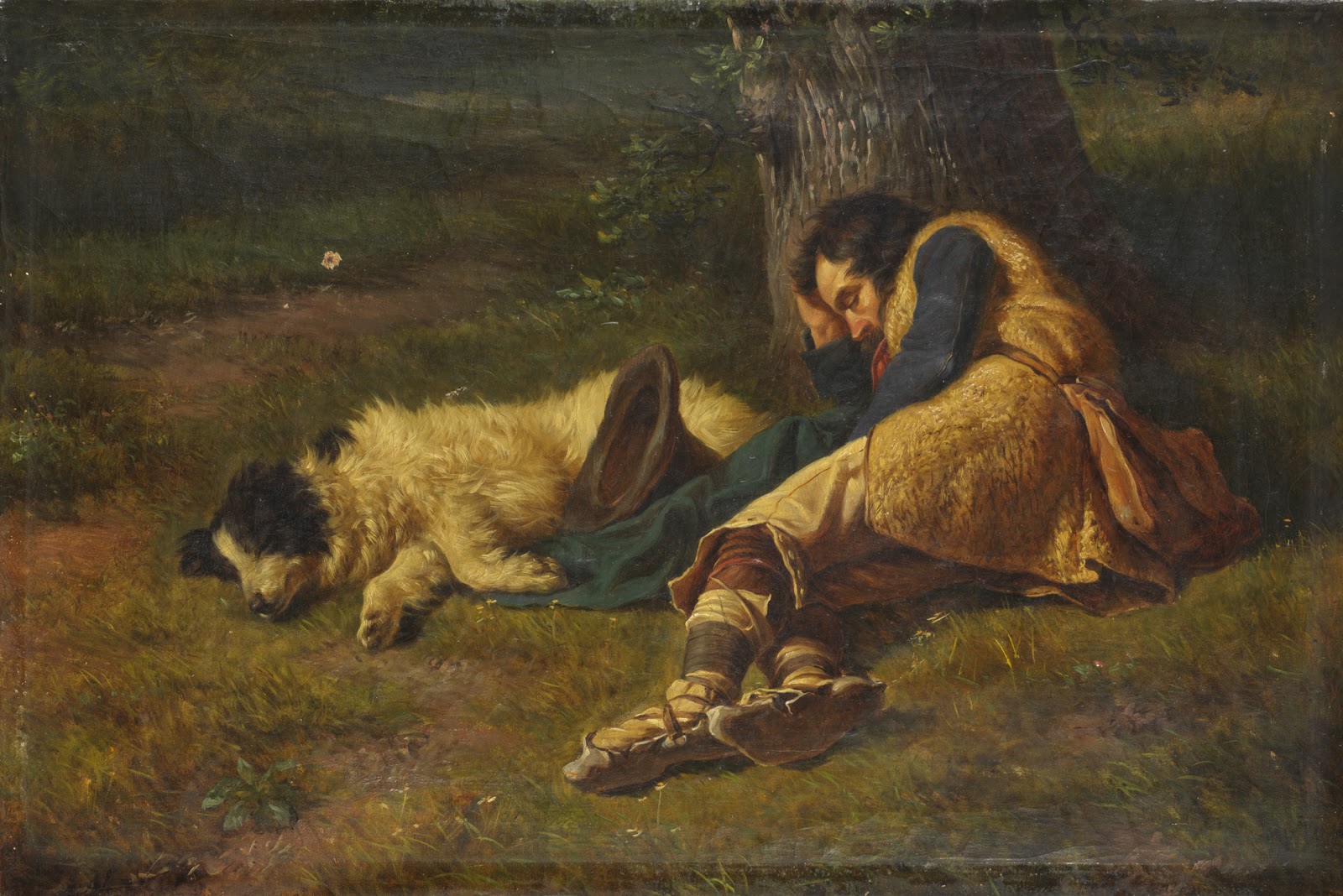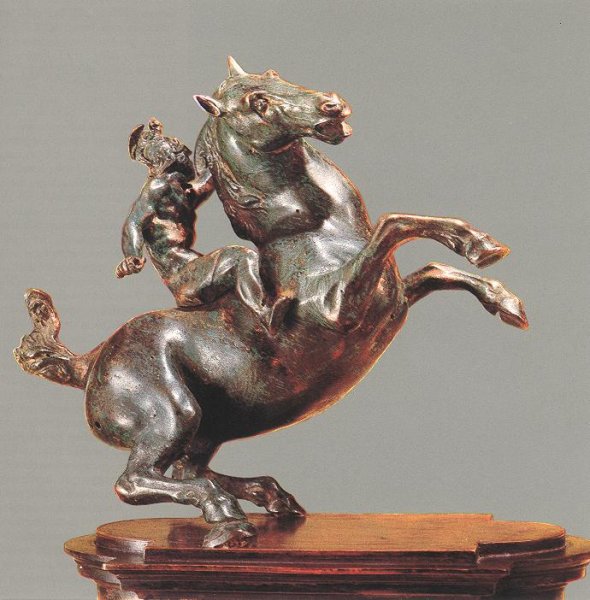Home » Tutti i post

Filippo Palizzi | Pastore addormentato con il suo cane, 1850-1855
Filippo Palizzi (1818-1899) con il fratello Giuseppe, rappresenta il primo tentativo di un indirizzo verista nella pittura italiana dell'Ottocento.
Sulla scia della Scuola di Posillipo e di una spontanea inclinazione orientò il suo lavoro verso una dettagliata osservazione del vero.
Fu tra i primi pittori a interessarsi di fotografia ed a praticarla, sulla base di conoscenze tecniche molto approfondite.

Filippo Palizzi | Verist painter
Filippo Palizzi (1818-1899) was an Italian painter. Filippo Palizzi was born in Vasto (Chieti).
He moved to Naples in 1837 and enrolled at the Royal Institute of Fine Arts, but withdrew after a few months to attend the private school of the painter Giuseppe Bonolis.
Contact with his brother Giuseppe, who moved to France in 1844, introduced him to the painting of the Barbizon School.

Tanvi Pathare | Figurative painter
Tanvi Pathare, born in Mumbai, India, showed a growing interest in the fine arts since a very early age.
She graduated with honors from the prestigious Sir J. J. School of Art in Mumbai where she received a Bachelors of Fine Arts in Painting.
Following the allure of the realistic tradition of painting from nature, Tanvi attended The Florence Academy of Art, Florence, Italy, graduating from the Painting Program in 2012.

Lionel Percy Smythe | Victorian landscape watercolors painter
Lionel Percy Smythe (1839-1918) was Wyllie's older half-brother and the eldest of three illegitimate children that their mother, Katherine Benham, a singer, had with Percy Smythe, 6th Viscount Strangford (though the family always claimed a marriage).
He was born in London on 4 September 1839 and spent his early years in France, where his younger sister and brother were born, though the family returned to London in 1843 and lived in Gloucester Crescent, Camden.

Leonardo da Vinci | Differenza tra la Pittura e la Scultura
Trattato della Pittura
Parte prima | Capitolo 32
Tra la pittura e la scultura non trovo altra differenza, senonché lo scultore conduce le sue opere con maggior fatica di corpo che il pittore, ed il pittore conduce le opere sue con maggior fatica di mente.
Provasi cosí esser vero, conciossiaché lo scultore nel fare la sua opera fa per forza di braccia e di percussione a consumare il marmo, od altra pietra soverchia, ch'eccede la figura che dentro a quella si rinchiude, con esercizio meccanicissimo, accompagnato spesse volte da gran sudore composto di polvere e convertito in fango, con la faccia impastata, e tutto infarinato di polvere di marmo che pare un fornaio, e coperto di minute scaglie, che pare gli sia fioccato addosso; e l'abitazione imbrattata e piena di scaglie, e di polvere di pietre.

Guy Rose (1867-1925) | Impressionist painter
Guy Rose was an American painter who is recognized as one of California's top Impressionist painters of the late 19th and early 20th centuries.
Guy Orlando Rose was born March 3, 1867 in San Gabriel, California. He was the seventh child of Leonard John Rose and Amanda Jones Rose.
His father was a prominent California senator. He and his wife raised their large family on an expansive Southern California ranch and vineyard - the San Gabriel Valley town of Rosemead bears the family name. In 1876 young Guy Rose was accidentally shot in the face during a hunting trip with his brothers. While recuperating he began to sketch and use watercolors and oil paints.

Albrecht Dürer | Woodcuts and Engravings
Undisputed master of the woodcut, German painter and engraver Albrecht Dürer (1471-1528) is one of the most celebrated Northern Renaissance painters and printmakers. His original etchings, engravings and woodcuts contain exquisite detail and elaborate imagery drawing on religious and philosophical ideas.
For biographical notes notes -in english and italian- on Dürer see Albrecht Dürer ~ Renaissance painter.

Albrecht Dürer | Hands study
Albrecht Dürer (1471-1528) was a painter, printmaker and theorist of the German Renaissance.
Born in Nuremberg, Dürer established his reputation and influence across Europe when he was still in his twenties, due to his high-quality woodcut prints.
He was in communication with the major Italian artists of his time, including Raphael, Giovanni Bellini and Leonardo da Vinci, and from 1512 he was patronized by emperor Maximilian I.

Albert Carrier-Belleuse | La Melodie, 1887
Albert-Ernest Carrier-Belleuse (born Albert-Ernest Carrier de Belleuse; 12 June 1824 - 4 June 1887) was a French sculptor. He was one of the founding members of the Société Nationale des Beaux-Arts, and was made an officer of the Legion of Honour.
His work encompassed all manner of sculptural subjects and materials, and his naturalism incorporated a breadth of styles: unembellished Realism, neo-Baroque exuberance, and Rococo elegance.
For biographical notes notes -in english and italian- on Carrier de Belleuse see Albert Carrier-Belleuse ~ Chryselephantine sculpture.

Albert Carrier-Belleuse | Rembrandt sitting with book
Albert Carrier-Belleuse (1824-1887) was instrumental in popularising the fashion for ideal portraits of historical personalities. After his return from England in 1855, he created a lively series of fantasy busts of great artists.
The Rembrandt was one of the first of the sculptor's series of busts and was exhibited at the 1863 Union Centrale in Faience with a bust of Durer. These two were soon followed by portraits of Beethoven, Mozart, Michelangelo and Raphael, and in 1874, Rubens, van Ostade, Velazquez and Murillo were added to the series.

Paul Gagni | Paris painting

Arthur Schopenhauer: "No rose without a thorn but many a thorn without a rose"
• "Talent hits a target no one else can hit; Genius hits a target no one else can see".
• "All truth passes through three stages. First, it is ridiculed. Second, it is violently opposed. Third, it is accepted as being self-evident".
• "Great men are like eagles, and build their nest on some lofty solitude".
• "If you want to know your true opinion of someone, watch the effect produced in you by the first sight of a letter from him".
Antonio Nunziante

Louis Toffoli | Abstract Cubist painter
Louis Toffoli (1907-1999) was a French modernist artist, born in 1907, known for his characteristic post-cubist transparent paintings.
A twentieth century French painter and printmaker, Louis Toffoli studied art at the Ecole des Beaux-Arts, Trieste in 1924. In 1928 he exhibited his paintings in that city and was promptly condemned by Mussolini's fascist regime.
Two years later Toffoli emigrated to Paris and began regularly exhibiting at the Salon d'Automne, Salon des Independants, Salon des Peintres Temoins de leur Temps and elsewhere.
With the outbreak of the Second World War (1939-1945) Louis Toffoli sought refuge in the countryside of Touraine and worked for the French Resistance. After the war he returned to Paris and received his French citizenship in 1947.

John Haag, 1980 | Realist / Impressionist painter
John Haag is a professional artist whose work has been described as a fusion of impressionism and realism. Specializing in oil and charcoal, Haag began painting at the age of 18 and selling his work at age 21. He had his first solo show at age 24 in Park City, UT. Working primarily as a portrait artist in his early career, Haag’s work can be found in private collections throughout the US and has been commissioned by many prominent Americans, including the late world renowned author/speaker Steven R. Covey.
Iscriviti a:
Post (Atom)



